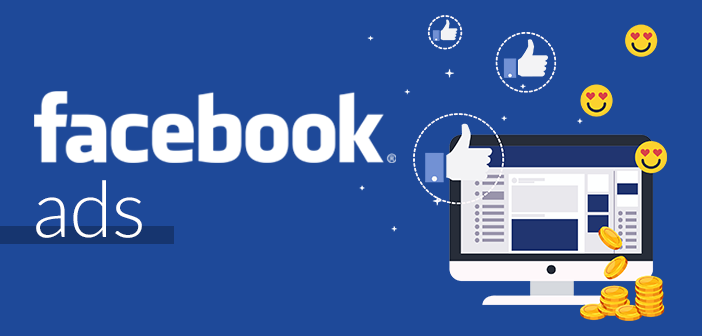How to Run Advertisements on Facebook: A Step-by-Step Guide for Beginners
Facebook, with over 2.9 billion monthly active users, is a goldmine for businesses looking to reach their target audience. Running advertisements on Facebook can help you boost brand awareness, drive website traffic, and increase sales. However, to make the most of your ad budget, you need a clear strategy. This guide will walk you through how to run advertisements on Facebook, optimized for SEO to help your blog post rank high on Google search.
- How to Run Advertisements on Facebook: A Step-by-Step Guide for Beginners
- Why Advertise on Facebook?
- Step 1: Set Up a Facebook Business Page
- Step 2: Access Meta Business Suite
- Step 3: Define Your Campaign Objective
- Step 4: Set Your Budget and Schedule
- Step 5: Target Your Audience
- Step 6: Choose Ad Placements
- Step 7: Create Compelling Ad Content
- Step 8: Install the Facebook Pixel
- Step 9: Monitor and Optimize Your Ads
- Step 10: Scale Successful Campaigns
- Conclusion
Why Advertise on Facebook?
Facebook’s advertising platform is powerful because of its precise targeting options. You can reach specific audiences based on their interests, behaviors, location, and demographics. Plus, with tools like the Facebook Pixel, you can track user actions and optimize your campaigns for better results. Whether you’re a small business owner or a marketer, advertising on Facebook can deliver a high return on investment (ROI) when done right.
Step 1: Set Up a Facebook Business Page
Before you can run ads, you need a Facebook Business Page. This is where users will land when they click on your ad, so it must be fully optimized.
- Choose a Clear Page Name: Use your brand name and include relevant keywords. For example, if you sell organic skincare, a name like “GlowNaturalSkincare” is better than just “Glow.”
- Add a Profile Picture and Cover Photo: Use high-quality images that reflect your brand. Ensure your logo is clear and the cover photo is engaging.
- Complete the About Section: Include keywords related to your business, like “organic skincare products” or “affordable yoga classes,” to improve discoverability.
- Add a Call-to-Action (CTA) Button: Choose a CTA like “Shop Now” or “Contact Us” to guide users toward your goal.
A well-optimized page builds trust and improves your ad performance.
Step 2: Access Meta Business Suite
To create and manage your ads, use the Meta Business Suite (formerly Facebook Business Suite). This free tool lets you handle your Facebook and Instagram pages, create ads, and track performance in one place.
- Go to business.facebook.com and create a Meta Business Suite account.
- Link your Facebook Business Page to the account.
- Set up an ad account by providing your business name, time zone, and payment information.
Step 3: Define Your Campaign Objective
Facebook offers several campaign objectives to match your goals. Choosing the right one is key to running effective ads.
- Awareness: Increase brand visibility or reach new audiences.
- Traffic: Drive visitors to your website or blog.
- Engagement: Boost likes, comments, or shares on your posts.
- Leads: Collect contact information, like emails or phone numbers.
- Conversions: Encourage actions like purchases or sign-ups.
For example, if you’re promoting a new blog post, choose the “Traffic” objective to send users to your website.
Step 4: Set Your Budget and Schedule
Your budget determines how many people see your ad. Start small to test what works.
- Daily Budget: Spend a set amount each day, like $5, to control costs while learning.
- Lifetime Budget: Set a total budget for the entire campaign, letting Facebook distribute it over time.
- Schedule: Decide if your ad runs continuously or for a specific period, like a week-long sale.
Use Advantage+ Budget to let Facebook automatically allocate funds to top-performing ad sets for better ROI.
Step 5: Target Your Audience
Facebook’s targeting options are what make it stand out. You can narrow down your audience to ensure your ad reaches the right people.
- Demographics: Target by age, gender, or location. For example, target women aged 25-45 in New York for a local beauty salon.
- Interests: Choose interests related to your product, like “fitness” for gym equipment or “vegan recipes” for plant-based foods.
- Behaviors: Target users based on actions, like online shoppers or frequent travelers.
- Custom Audiences: Upload a list of existing customers’ emails to retarget them.
- Lookalike Audiences: Reach new users similar to your existing customers.
Start with a broad audience, then refine it based on performance data.
Step 6: Choose Ad Placements
Facebook offers automatic and manual placement options. Automatic placements let Facebook show your ad across platforms like Facebook, Instagram, and Audience Network for maximum reach. For beginners, stick with automatic placements to test what works, then switch to manual to focus on high-performing spots like News Feed or Stories.
Step 7: Create Compelling Ad Content
Your ad’s creative elements, visuals, and copy, are critical to grabbing attention.
- Visuals: Use bright, high-quality images or videos. For example, a vibrant photo of your product in use performs better than a dull stock image. Keep text in images under 20% to avoid restrictions.
- Headline: Write a short, catchy headline with keywords. For example, “Discover Affordable Yoga Gear Today!” works for a fitness brand.
- Ad Copy: Keep it simple and focus on one person. Highlight benefits, like “Save 20% on your first order” or “Get glowing skin in 7 days.” Include a clear CTA, like “Shop Now” or “Learn More.”
- Format: Choose from single image, carousel (multiple images), or video ads. Carousel ads are great for showcasing multiple products or blog posts.
Step 8: Install the Facebook Pixel
The Facebook Pixel is a piece of code you add to your website to track user actions, like page views or purchases. It helps you measure ad performance and retarget visitors.
- Go to Meta Business Suite, create a Pixel, and copy the code.
- Add it to your website’s header.
- Set up events, like “View Content” or “Purchase,” to track specific actions.
This data lets you optimize ads and retarget users who didn’t convert.
Dont miss: TikTok Ads vs. Meta Ads: Which Offers Better ROI for Your Business?
Step 9: Monitor and Optimize Your Ads
Once your ad is live, track its performance using Meta Business Suite’s analytics.
- Key Metrics:
- Click-Through Rate (CTR): Aim for 0.9% or higher, depending on your industry.
- Cost Per Click (CPC): Lower CPCs (e.g., $0.45 for apparel) mean better efficiency.
- Conversion Rate: Check how many clicks lead to your desired action, like a purchase.
- A/B Testing: Test different images, headlines, or audiences to find what works best.
- Engagement: Respond to comments on your ads to boost engagement and lower costs.
If an ad isn’t performing, pause it and tweak the creative or targeting. Wait at least 24 hours after changes to let Facebook’s algorithm adjust.
Step 10: Scale Successful Campaigns
Once you find a winning ad, scale it to reach more people.
- Increase Budget: Gradually increase your budget for high-performing ads.
- Expand Audiences: Use lookalike audiences to find new customers similar to your best ones.
- Retarget: Show ads to users who visited your site but didn’t convert.
Conclusion
Running advertisements on Facebook is a powerful way to grow your business, but it takes planning and optimization. By setting up a strong Business Page, choosing the right objective, targeting your audience, and creating compelling ads, you can maximize your ROI. Use the Facebook Pixel and analytics to track performance and refine your strategy. With these steps, you’ll be on your way to running successful Facebook ad campaigns that drive results.
Ready to start? Contact Bintus Art and Everything for expert guide on how to launch your ad or log in to Meta Business Suite and launch your first ad today!
Image source:Reportgarden.com






